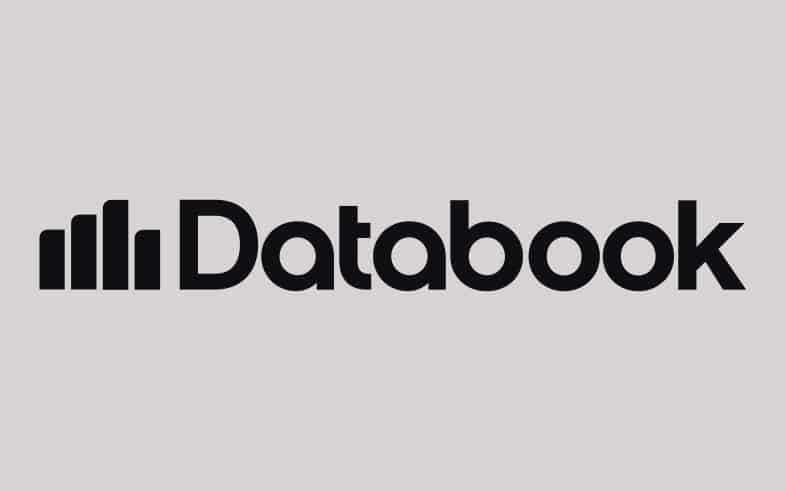Reading Time: 4 minutes
Building a Customer Point of View
Sarah Close

At Databook, we talk a lot about how our solutions enable account managers and reps to easily create in-depth customer points of view. But what if you’re not sure why you need to do that? Customers buy products—is there really anything more you need to know?Most definitely.Understanding the why behind the point of view will help ensure that you build trust with your customer and don’t skip critical steps in the sales cycle: steps that are essential to driving larger, more strategic deals. Equally important is knowing how to build the customer point of view so you can be seen as an industry-networked consultant—and not just a sales guy.
Why build a customer POV?
In one of our recent blog posts, Four Steps to Jumpstart Sales Productivity, we discussed crucial ways sales professionals can reduce the hours spent on up-front research and discovery. The goal? To give them more time to spend with customers and be better prepared to put that time to optimal use. Account managers and reps who are prepared for a customer meeting not only are up to speed on the topics at hand, but they’re ready to discuss how their solutions drive outcomes in the future. That’s the essence of productivity—and it’s the reason you need a customer point of view. Why? Because customers don’t care about your solutions. They care about their personal KPIs and improving performance for their company.

By building a holistic customer point of view in advance of your meetings, you’re positioning yourself to consistently frame conversations through a lens customers can comprehend: their own. That perspective is central not only to closing deals, but also to expanding deals outside of pure-technology buyers because it opens doors to other lines of business. It unlocks additional budget by demonstrating how your proposed solutions can remedy existing pain points throughout the organization and align with strategic imperatives.

Putting the POV together
As you might imagine, gaining that perspective means you must have access to the right information. And beyond that, you must have tools that allow you to turn that information into actionable insight—quickly and accurately. That’s where Databook comes in. Our platform is designed to do the heavy lifting, applying machine learning and Artificial Intelligence (AI) technologies to both curate and analyze millions of data points of customer data in real time. Databook solutions also deliver this insight to you through intuitive visuals and automated deliverables, so everyone on the go-to-market team can easily fulfill their responsibilities in the sales cycle.
Backed by Databook’s powerful AI, you can work on constructing a customer POV that encompasses all the necessary elements for driving deals:
- Awareness of a company’s current operating context. This is imperative prior to beginning a sales cycle with a potential customer. Ensuring budget cycle alignment, determining COVID impact, and understanding financial performance can help sellers not only improve solution suggestions, but also prevent wasted time and effort on deals that are destined to go nowhere.
- Insight into the target company’s financial case for change. A financial case for change can consist of underperformance, value-erosion, or even outperformance. By demonstrating an understanding of which value drivers represent areas of underperformance, sellers can prioritize solutions that improve areas of financial weakness, while relegating those that are less likely to be of interest. For example, an oil and gas company hemorrhaging cash flow is less likely to invest in a more expensive ERP solution today.
- Understanding of executive-level strategic objectives. This is the qualitative piece that aligns solution offerings with company priorities (and executive compensation metrics). Worked strategically, it can catalyze increased C-suite interest, driving deal size substantially higher.
- Ability to anticipate customer needs. These should be clear-cut examples of how your solutions can transform the company’s areas of financial underperformance while directly aligning to executive priorities. Provide these, and you’ll position yourself as a strategic partner, eager to solve problems, as opposed to a tactical seller who’s only in it for the win.
- Specific business outcome expectations. Like it or not, numbers and metrics rule—particularly if you’re meeting with executives. By outlining the quantifiable impact of proposed solutions with an eye-catching revenue or profit improvement, you’ll generate increased interest from key buyers.
Last month, the 2020 Salesforce State of Sales report demonstrated very clearly that reps understand the importance of building a strong relationship with their customers. In fact, 83% of survey respondents agreed that it’s imperative to build customer trust before a sale, and 88% said today’s economic climate makes it critical to anticipate customer needs. But perhaps more telling is the fact that top-performing reps are 1.5x-4.5x more likely to be closely tracking customer insights across things like purchase history and competitor activity, and they’re 2.7x more likely to leverage AI along the way.
Without a doubt, this shows that today’s highest performing sales professionals recognize the importance of building a customer POV. They know deep customer understanding is the key to aligning proposed solutions with a company’s financial case for change and executive priorities. And they know that alignment is what ultimately drives bigger deals, faster, through the line of business.
It’s not an easy journey, but we at Databook are confident our solutions simplify the process to help top performers succeed. And we believe that, just like riding a bike, learning to build a compelling customer point of view is a skill that will serve you for life.













